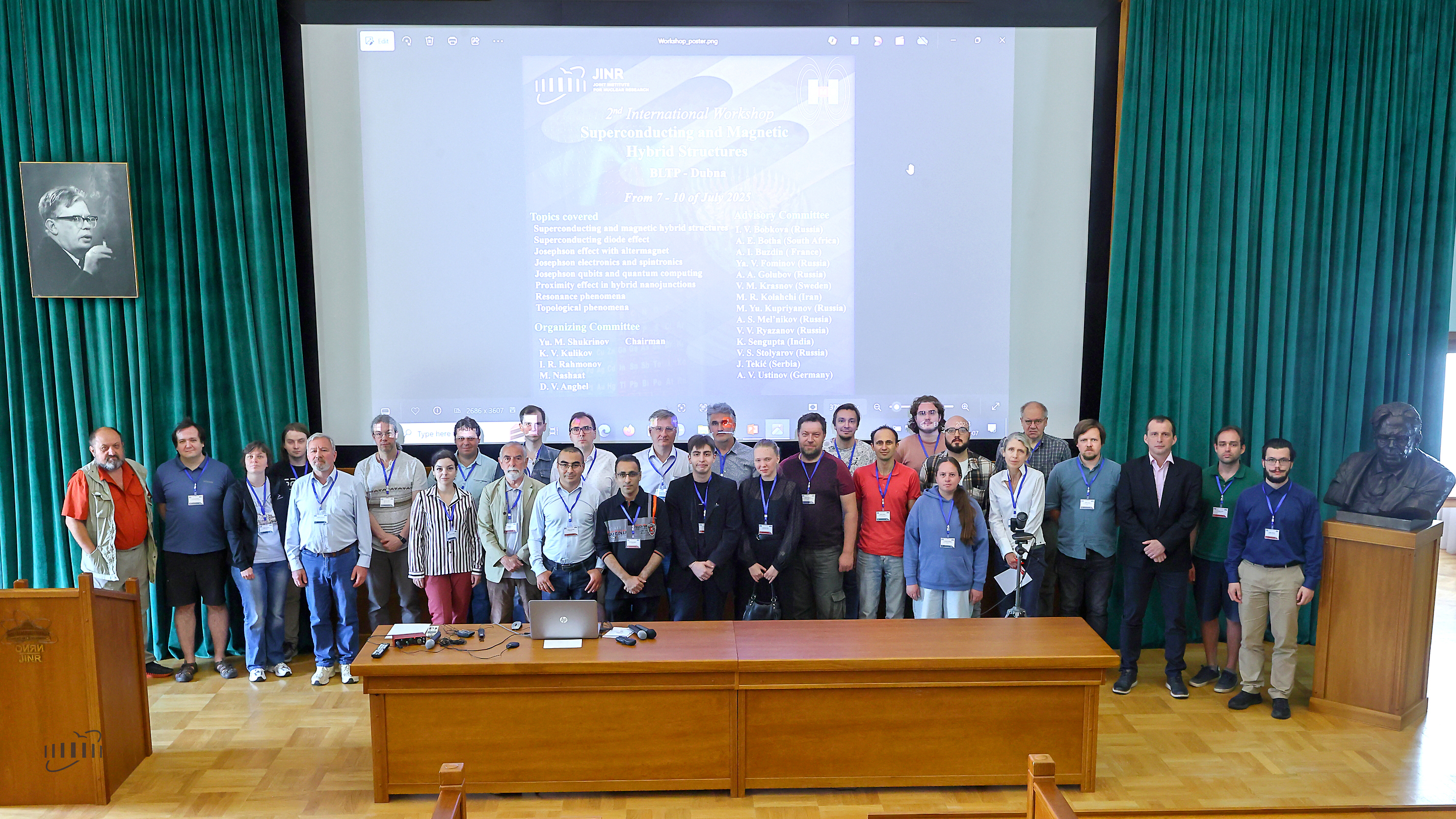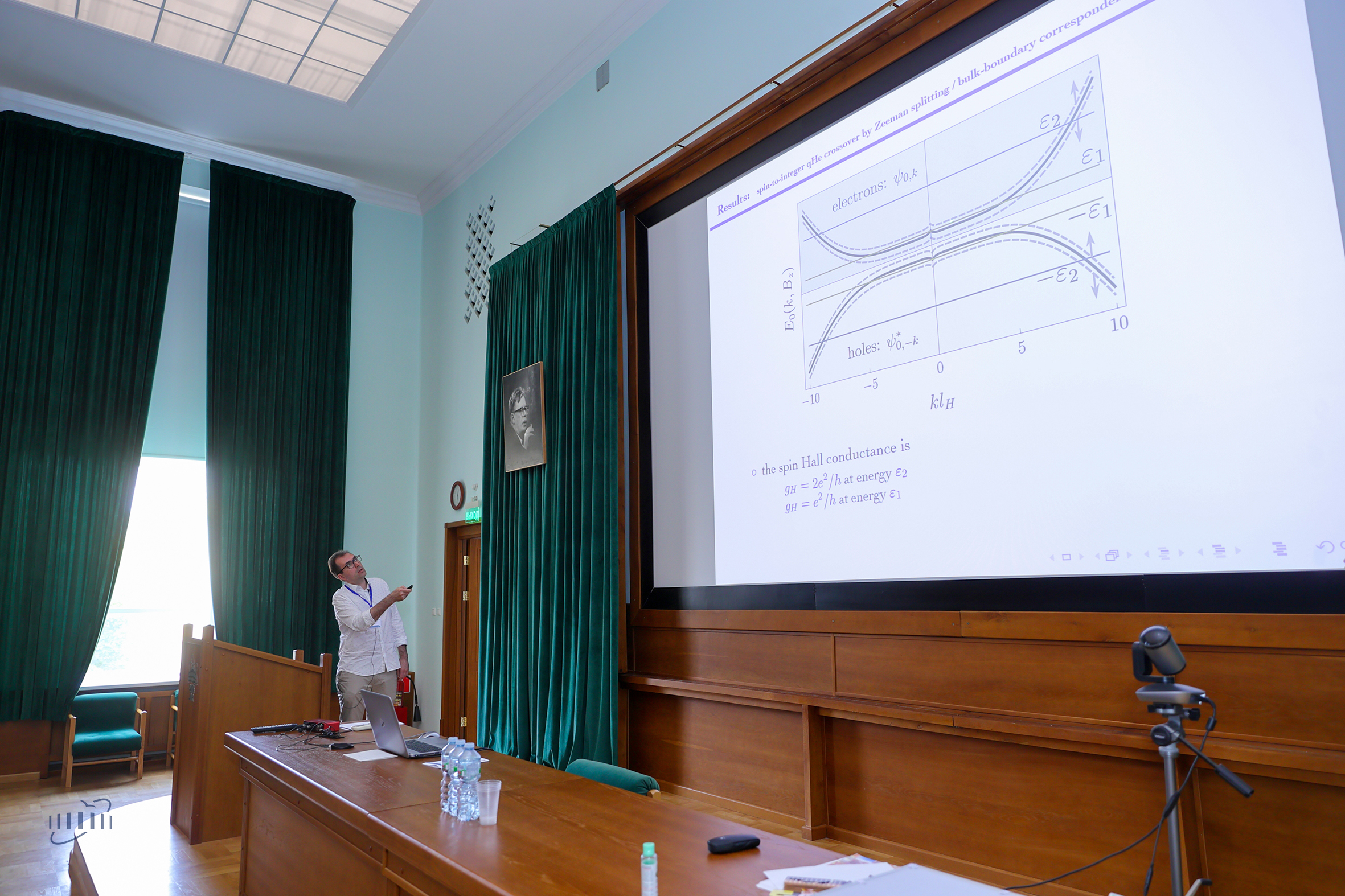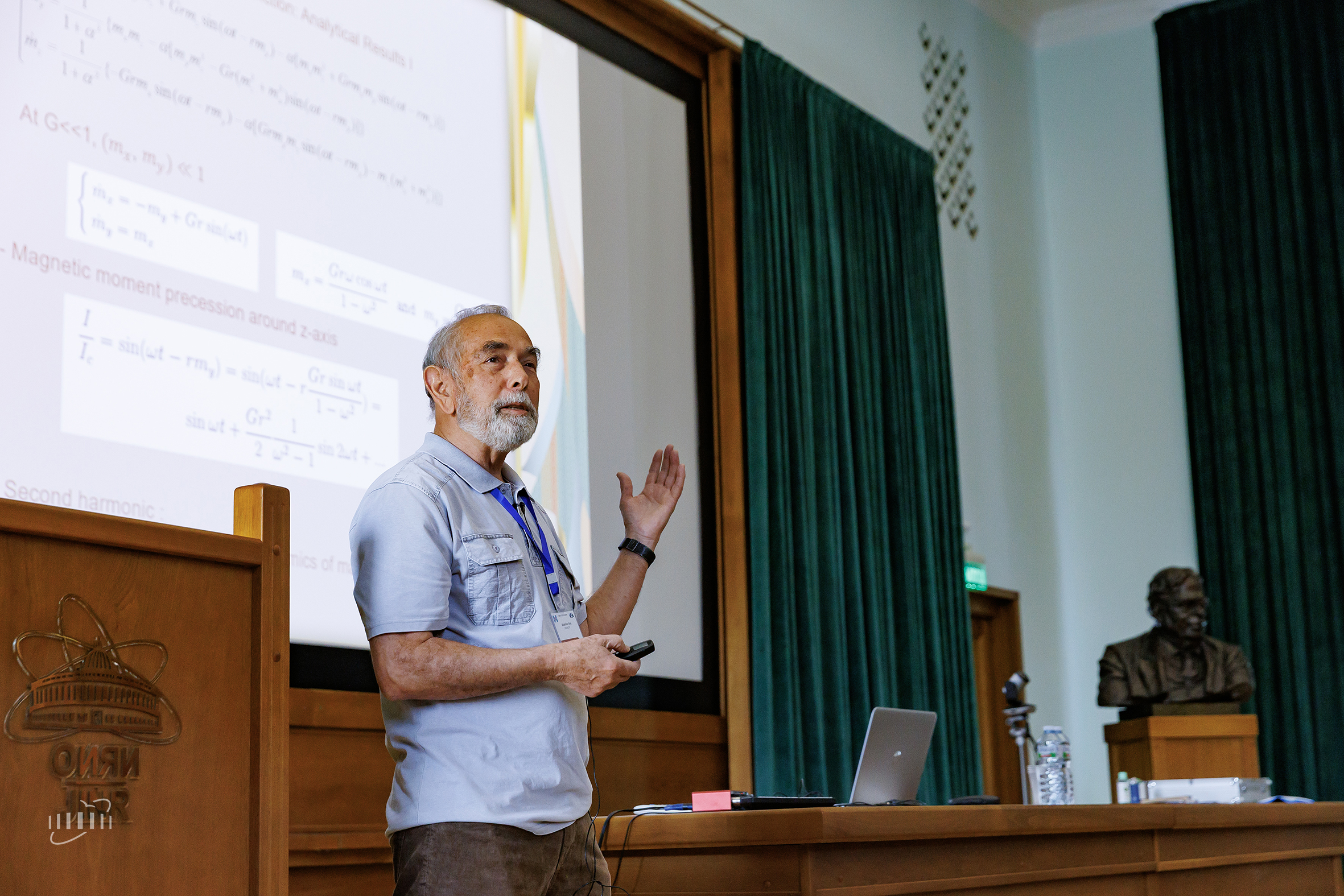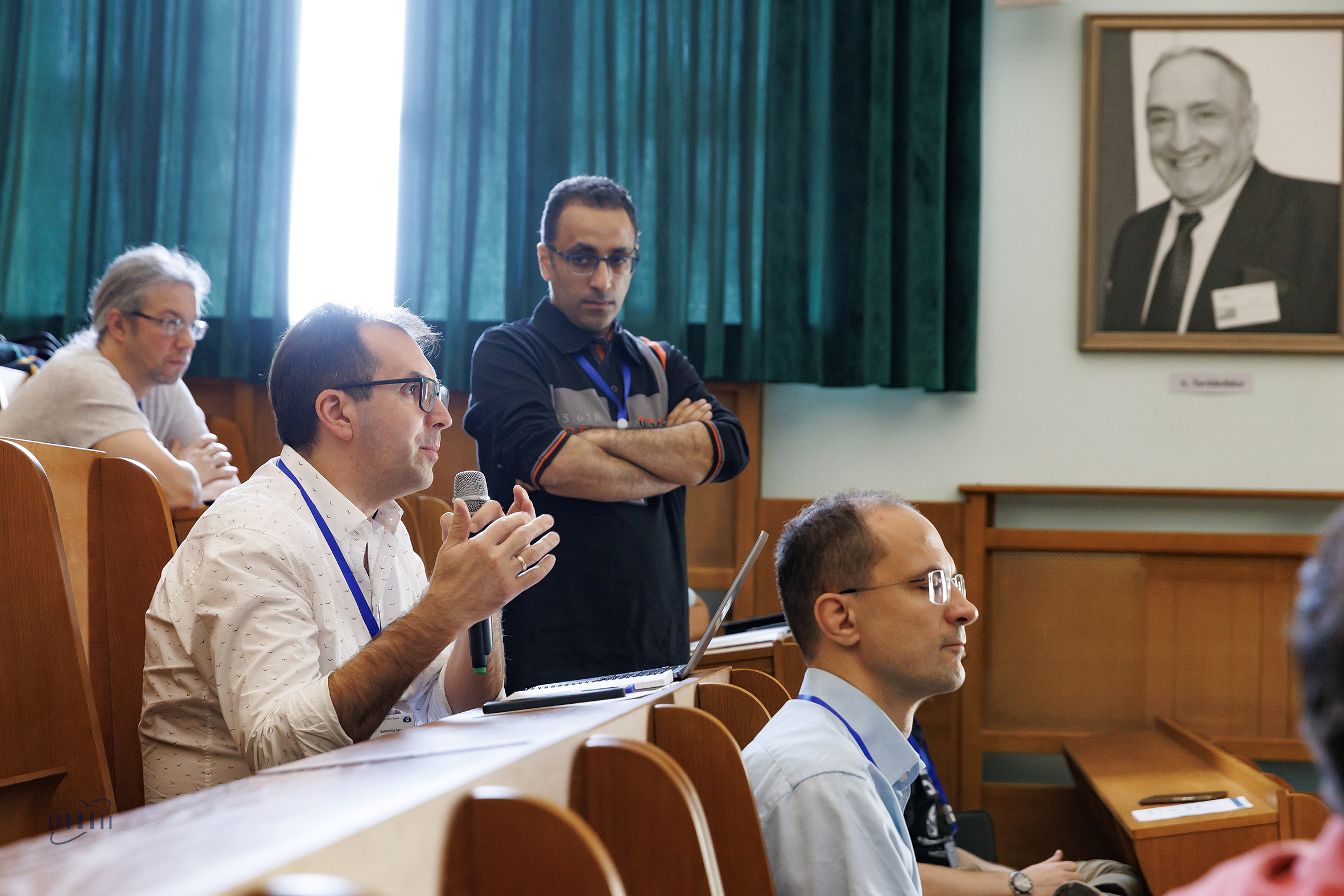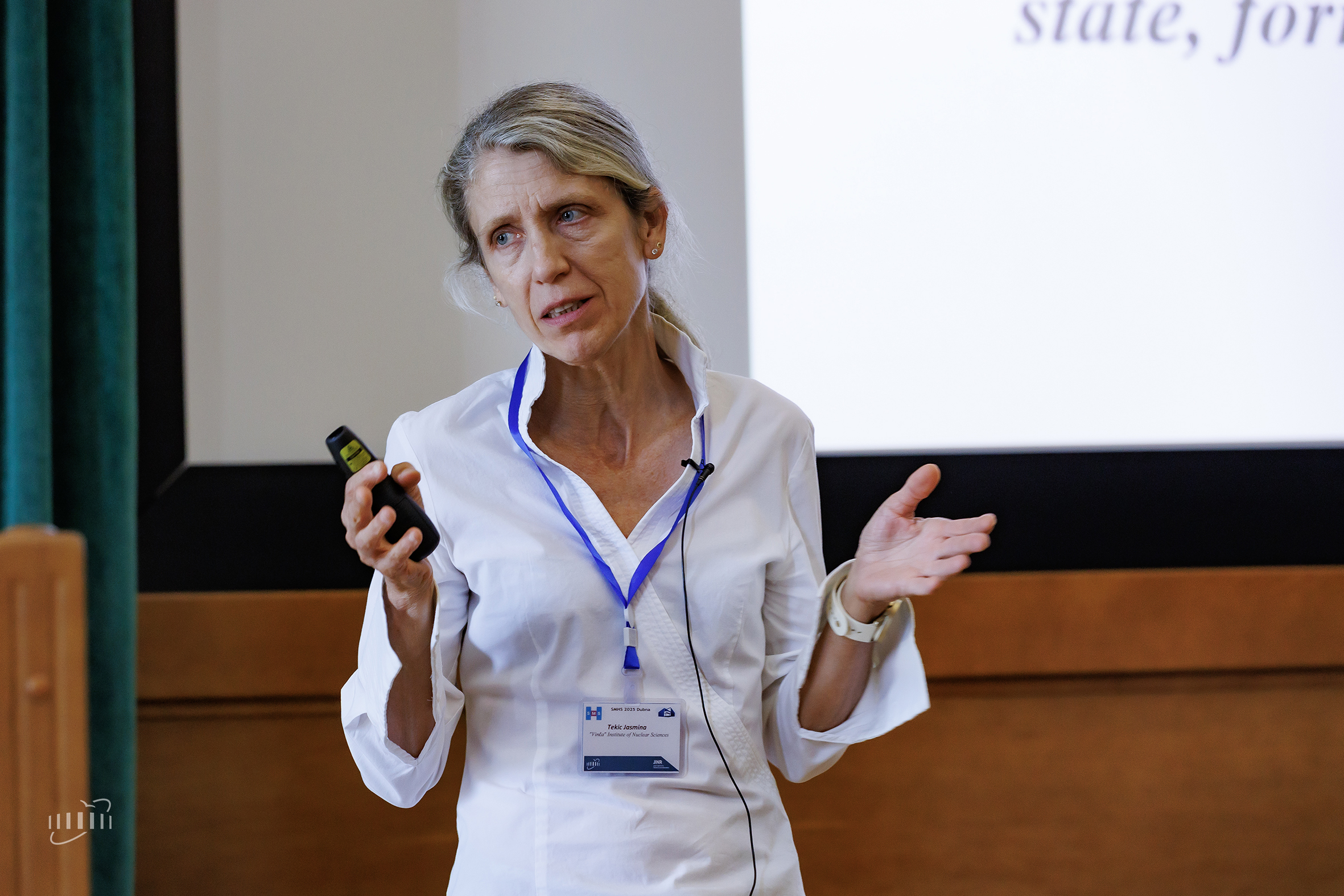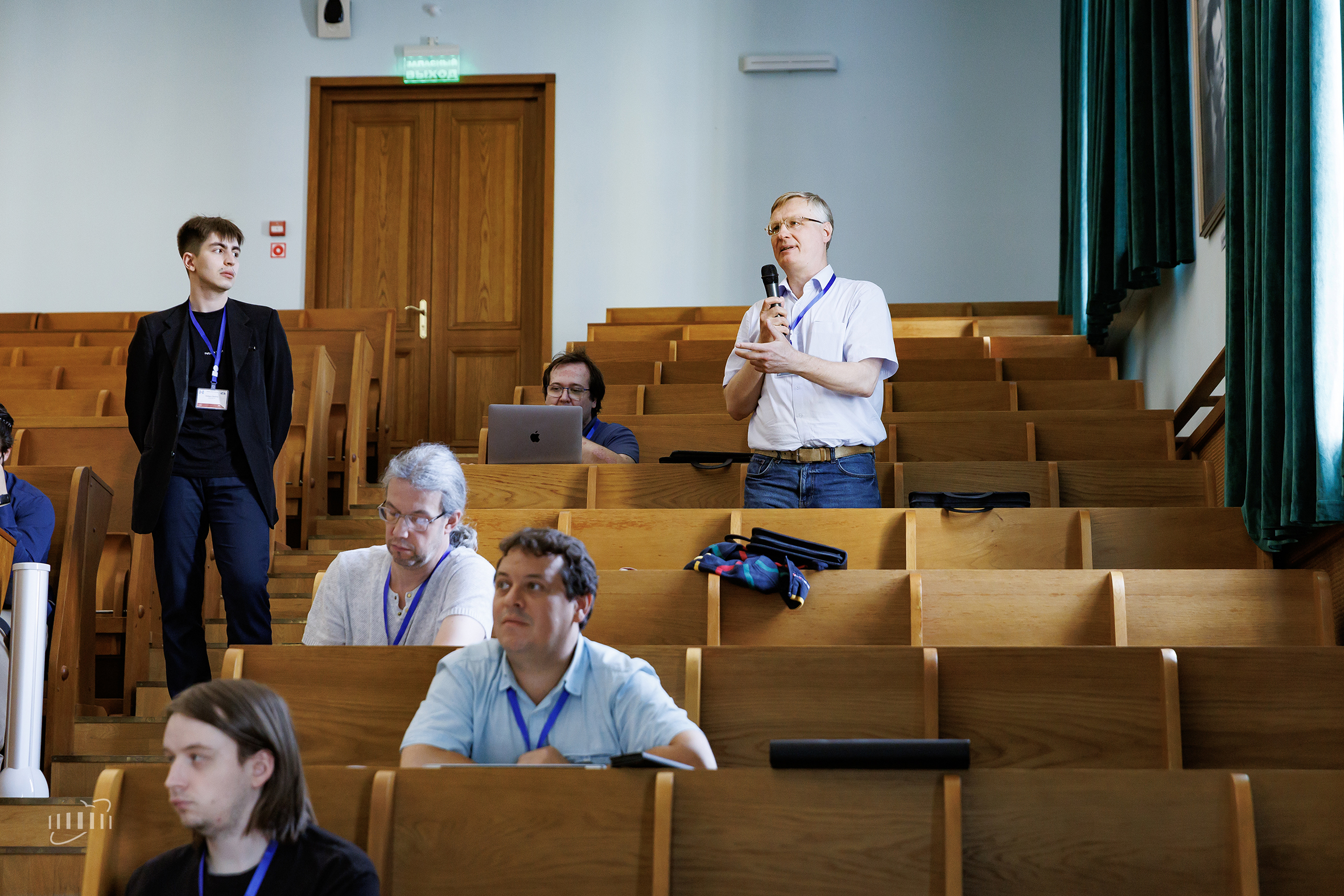Superconducting and Magnetic Hybrid Structures workshop started at BLTP at JINR
News, 08 July 2025
The 2nd Superconducting and Magnetic Hybrid Structures international workshop is taking place at the Laboratory of Theoretical Physics at JINR from 7 to 10 July 2025. Participants are discussing physical phenomena significant not only for theoretical physics, but also for technology, particularly electronics, low-dissipation computing, and quantum information systems.
The meeting participants include researchers from BLTP, MLIT, and FLNP at JINR, the Moscow Institute of Physics and Technology (MIPT, Russia), Moscow State University (Russia), the Landau Institute for Theoretical Physics of the Russian Academy of Sciences (RAS), the RAS Institute of Solid State Physics, the RAS Institute for Physics of Microstructures, the Vinča Institute of Nuclear Sciences (Serbia), Stockholm University (Sweden), the Centre for the Development of Digital Technologies (Krasnogorsk, Russia) the Russian Quantum Centre, Dukhov Automatics Research Institute (Russia), RAS Lebedev Physical Institute, the MISIS National University of Science and Technology (Russia), and the Kazan Scientific Centre of the Russian Academy of Sciences.
The main topics of this year’s event are:
- superconducting diode effect,
- Josephson effect with altermagnet,
- Josephson electronics and spintronics,
- Josephson qubits and quantum computing,
- proximity effect in hybrid nanojunctions,
- resonance phenomena and topological phenomena.
BLTP JINR Deputy Director for Scientific Work Eugen Mircea Anitas opened the event. “This workshop is an important and relevant platform for discussing the latest achievements in the physics of superconducting and magnetic hybrid systems. This area of science is currently at the forefront of condensed matter research and the development of quantum technologies,” Eugen Anitas emphasised. The BLTP Deputy Director noted that this year’s programme has an extensive range of topics: from the phenomena of non-reciprocal transport and superconducting diodes to spin-triplet correlations, Josephson neuromorphic circuits, and topological excitations. “All this reflects the increasing complexity and interdisciplinarity of this field of physics. The knowledge gained from studying strongly correlated superconducting and magnetic systems can help better understand quantum coherence, phase transitions, and collective excitations. Concepts closely related to many dynamic processes in the body are being studied using a high-density QCD matrix in the NICA Megascience Project,” he added.
On the first day of the workshop, plenary presentations were given: “Full counting statistics for unconventional superconductor junctions” (Alexander Golubov, MIPT), “Bulk-edge correspondence at the spin-to-integer quantum Hall effect crossover in topological superconductors” (Igor Burmistrov, Landau Institute of Theoretical Physics, “Peculiarities of mutual influence of superconductivity and magnetism in Josephson structures with ferromagnet” (Yury Shukrinov, BLTP).
During the event, the participants will visit the NICA Accelerator Complex. A poster session for young scientists will take place on Friday.
The workshop’s Organizing Committee consists of BLTP JINR researchers. The Advisory includes scientists from France, Germany, India, Iran, Netherlands, Russia, Serbia, South Africa, and Sweden. The abstracts were published in a collection.
The first workshop dedicated to important phenomena at the junction of superconductivity and magnetism was held at BLTP in 2023.
